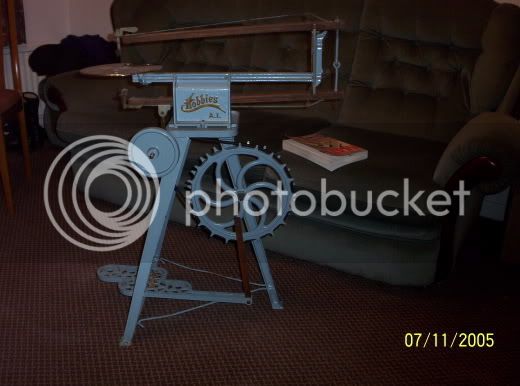My goodness, it's been cold today!
I picked up some router lettering templates at Stoneleigh and my first task has been to make a new house sign. I've tried to make something a bit more respectable than my usual efforts, although I reserve the right to produce customised signs for seasonal festivals :twisted: .
The first step was to take a plank of wood (oak),then cut and plane it to size. The template was clamped into position and the lettering was cut. According to the instructions, you're not supposed to go more than 2 or 3 mm deep, but I found that was quite adequate anyway:
- Cutting the 'M' (the'E' has already been cut)
Next, I trimmed the sign to its final dimensions using the tablesaw, routed the edges with a roundover cutter, and gave it a good sanding. I picked out the letters with a couple of coats of black enamel paint before applying two coats of Danish oil. The result is disconcertingly presentable and it's visible from several hundred yards at night
(and probably in thick fog, too :roll:  )
):
I've fastened it onto the wall with a French cleat.
The templates were extremely simple to use. I had thought of making my own but it would have probably been more trouble than it was worth. Still, it would have been nice to have had lower case lettering too. All in all, a very quick and simple project that'll be very useful and will hopefully prove to be more durable than some of my previous efforts.
Gill












